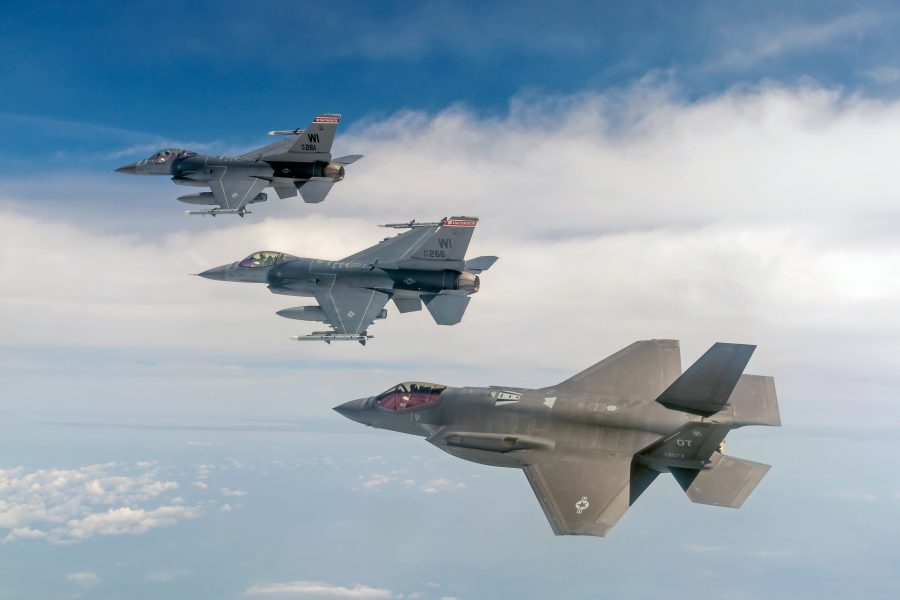Two Air National Guard bases in Alabama and Wisconsin will officially host the F-35A Joint Strike Fighter starting in 2023, the Air Force announced April 15.
Truax Field’s 115th Fighter Wing in Wisconsin and Dannelly Field’s 187th Fighter Wing in Alabama join Burlington Air National Guard Base in Vermont as the three Air National Guard locations with the F-35 so far. Active-duty Airmen at Hill Air Force Base, Utah; Eielson Air Force Base, Alaska; and RAF Lakenheath in the United Kingdom fly the F-35A as well.
Truax and Dannelly were under consideration for the past three years but needed to pass their environmental and mission requirements reviews to finalize the basing decision. They beat out three other places in Florida, Idaho, and Michigan to become the Air Force’s preferred locations as the next two host installations.
“F-35As will begin to replace many of the older fourth-generation aircraft, but the Air Force will continue to fly a mix of fifth and fourth-generation fighters into the 2040s,” the service said in an April 15 release. “This will allow the Air Force to maintain enough fighters to meet combatant commander requirements, provide required training, and allow a reasonable and uninterrupted deployment tempo for the force.”
Truax will swap out 21 F-16s for 18 F-35s, according to the Wisconsin National Guard. The F-35 will replace Dannelly’s F-16s as well. Sen. Doug Jones (D-Ala.) indicated in a release that the 187th Fighter Wing will start receiving jets in December 2023.
Sen. Tammy Baldwin (D-Wis.) noted that the F-35 program can help stabilize the local economy as it reels from the coronavirus pandemic.
“During this time of economic uncertainty, basing the F-35 mission at Truax Field will maintain the more than 1,650 jobs to which the 115th currently contributes, and over the lifetime of the F-35 mission there is an estimated economic impact of $4.8 billion for Wisconsin,” she said.
The Montgomery Advertiser reported in 2017 that bringing the F-35 to Alabama would lead to 1,000 new jobs, $70 million in initial contract opportunities for local and state companies, and $3 billion in new capital investment.
